What is it?
We’re looking at the brand-new SEAT Leon FR 1.5 TSI EVO 150PS manual car (that’s a bit of a mouthful isn’t it?) in Nevada (Metallic) White.
SEAT’s redesigned Leon model is now available in the UK and we have been driving it for the last week. The recommended retail price for this model is £24,535.
This new generation of Leon (MK4) replaces the much loved MK3 SEAT Leon model that was available between 2012 and 2020.
If it’s going to be another 8 years before we see the MK5 SEAT Leon, let’s hope SEAT have ticked the right boxes with this car.
Verdict
SEAT’s Fourth Generation Leon will be familiar to owners of the MK3 as things haven’t changed significantly. The new styling is divisive, but the new Leon continues with a familiar formula for SEAT.
What we liked
- Driving position and comfort
- Standard kit included
- Still “feels” like a Leon
- Performance and handling
What we didn’t like
- Voice control is really bad
- Removal of important physical buttons and dials
- No FR badge on the front
- Signs of penny pinching on storage
What’s changed from the previous model?
The looks, are the biggest thing you notice in terms of difference from the MK3. The new SEAT Leon has had a significant re-design, one that’s proved quite divisive amongst our community
You can see how the Leon has evolved over the generations here.
The front and rear of the car has seen the most notable change, with some arguing the front has taken a much more generic approach, like the Focus and other competing models.
If you’re lucky enough to drive one of the first of a new model of car on the road you usually spot other drivers doing a double take to see what it is. I didn’t notice anyone else batting an eyelid at the car. That is apart from a van driver in Tesco car park who spotted the rear first then drove past, stopped next to the Leon, looked the car up and down, before driving off. Other than that, it has just blended into the background.
Some people will be happy to blend in, one of the things that has attracted many to the SEAT brand has been that the car is different from what you usually see on the road. The MK3 is still a head turner if you ask me.
The car is a little bit longer, a little bit wider and the boot capacity is the same as the last generation.
Let’s get geeky with the figures…
| Five-door | SEAT Leon MK4 | SEAT Leon MK3 |
| Overall length (mm) | 4,368 | 4,282 |
| Overall width (mm) | 1,800 | 1,816 |
| Overall height (mm) | 1,456 | 1,459 |
| Wheelbase (mm) | 2,686 | 2,636 |
| Headroom row 1 (mm) | 1,045 | 1,042 |
| Headroom row 2 (mm) | 969 | 970 |
| Boot space (l) | 380 | 380 |
What extras does this FR trim include?
The FR trim we have here includes the following external changes compared to the lower down “SE Dynamic” trim:
- Different front and rear bumpers
- 17-inch alloy wheels (which we think look a bit boring)
- Dual (FAKE!) exhaust pipes
- 15 mm lower suspension set-up than the other trims.
- Full-LED technology at the rear of the vehicle including the “coast-to-coast” light
- LED dynamic indicators (front and rear)
- Illuminated front aluminium door plates.
Inside the cabin, the FR gets:
- Red stitching (steering wheel, gear stick gaiter, and seats)
- A leather multifunction steering wheel
- Three-zone air conditioning
- Wireless charging tray in the front and two additional USB-C points in the rear.
All the available trim levels and pricing can be found here.
Exterior
Let’s explore the exterior of the car in more detail.
Starting at the front, the Leon features a completely new look. The bonnet has two raised seams nearer the centre that angle away from badge if you are looking towards the car. The subtle centre crease from the MK3 has gone. This is more in line with the introduction of a new bonnet design on the Tarraco.
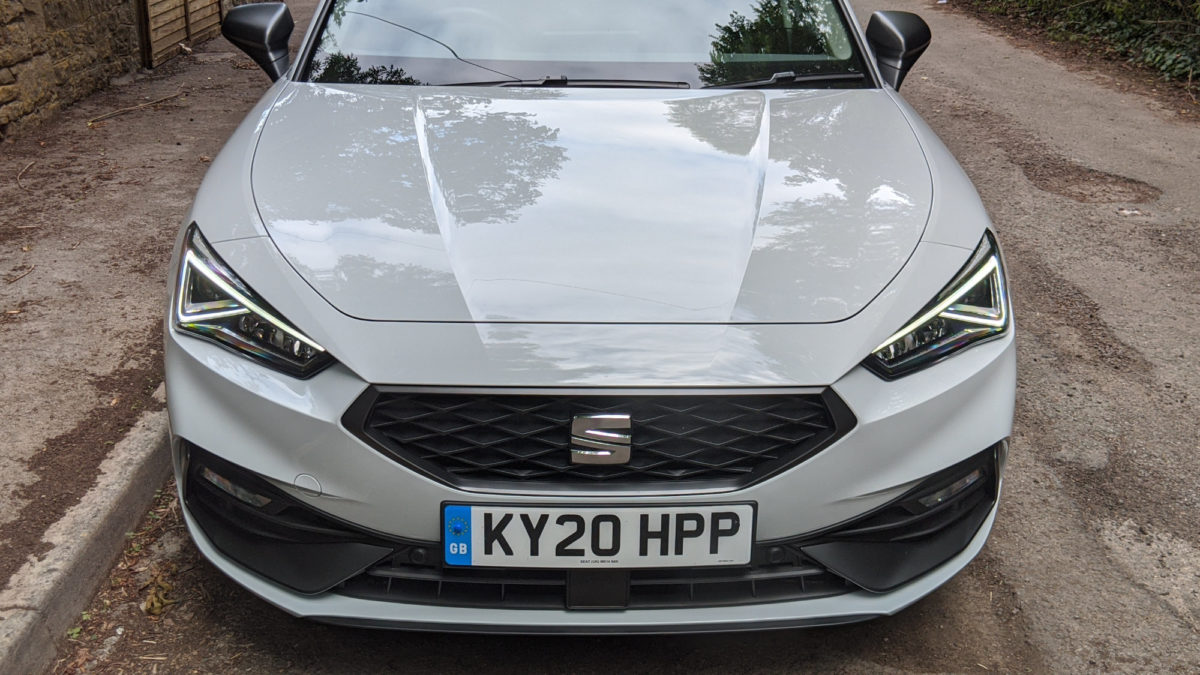
From the driver’s position you can see more of the bonnet that you can in the MK3. This adds to the impression that the car is a bit longer (it is slightly as shown in the figures above).
The centre grill has more angles to it and has a plastic grey edging that tapers out on different sides.
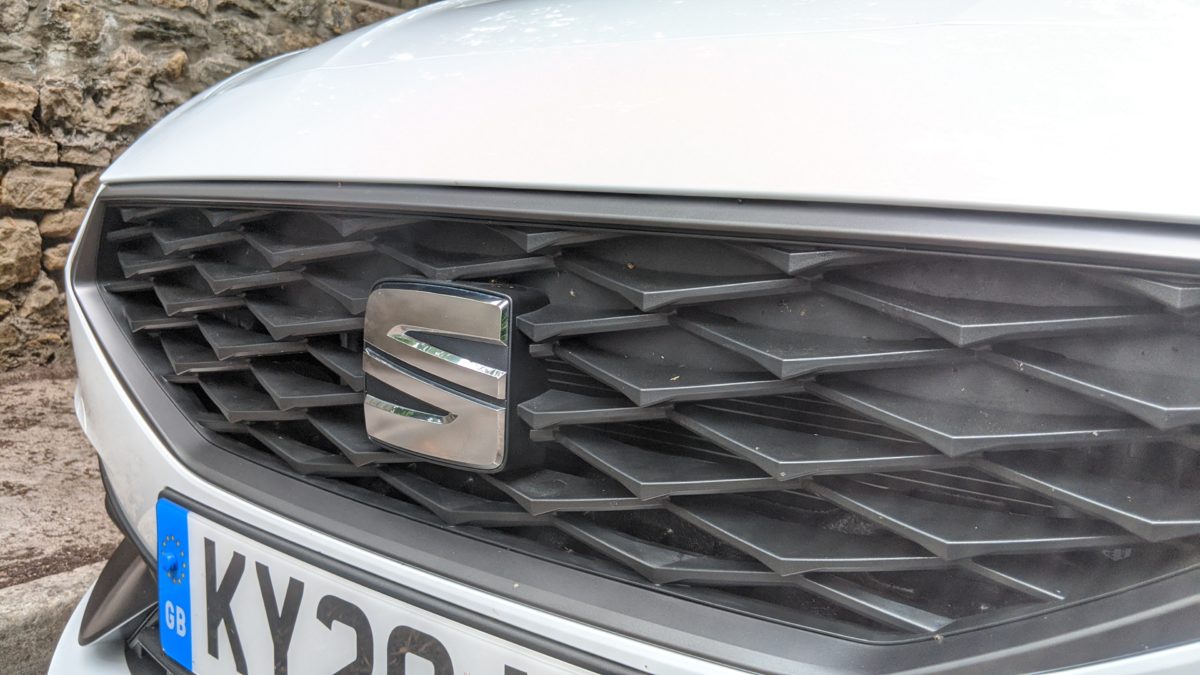
The LED lights are narrower and more aggressive looking than the MK3s.
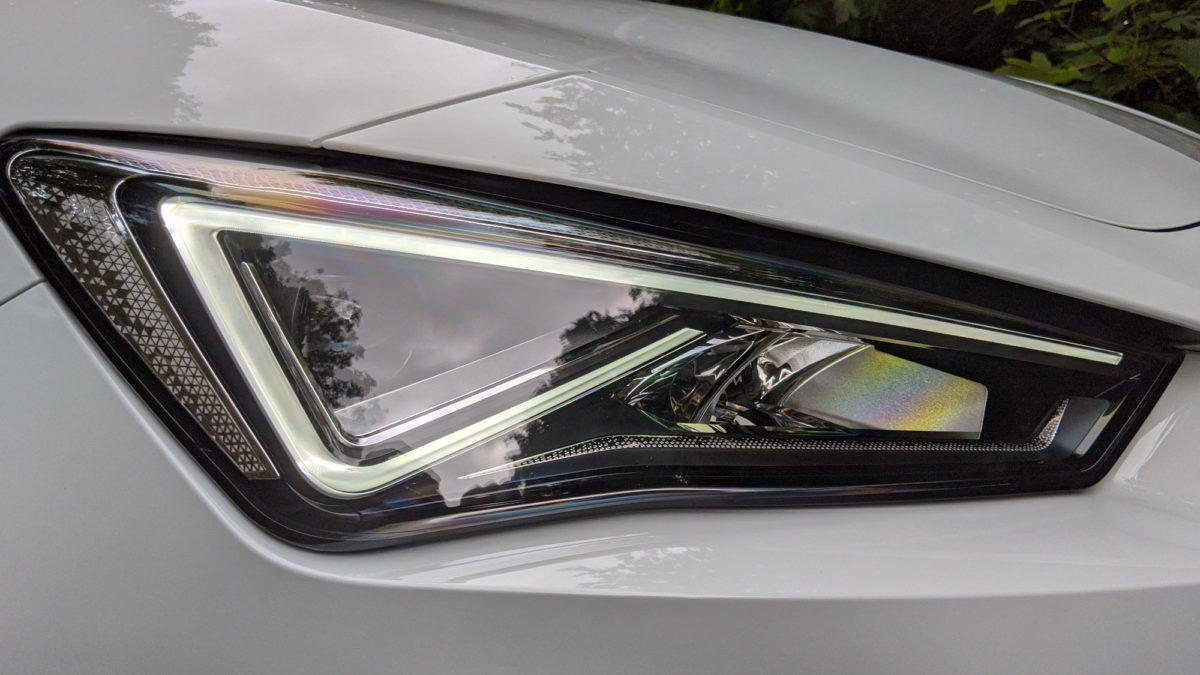
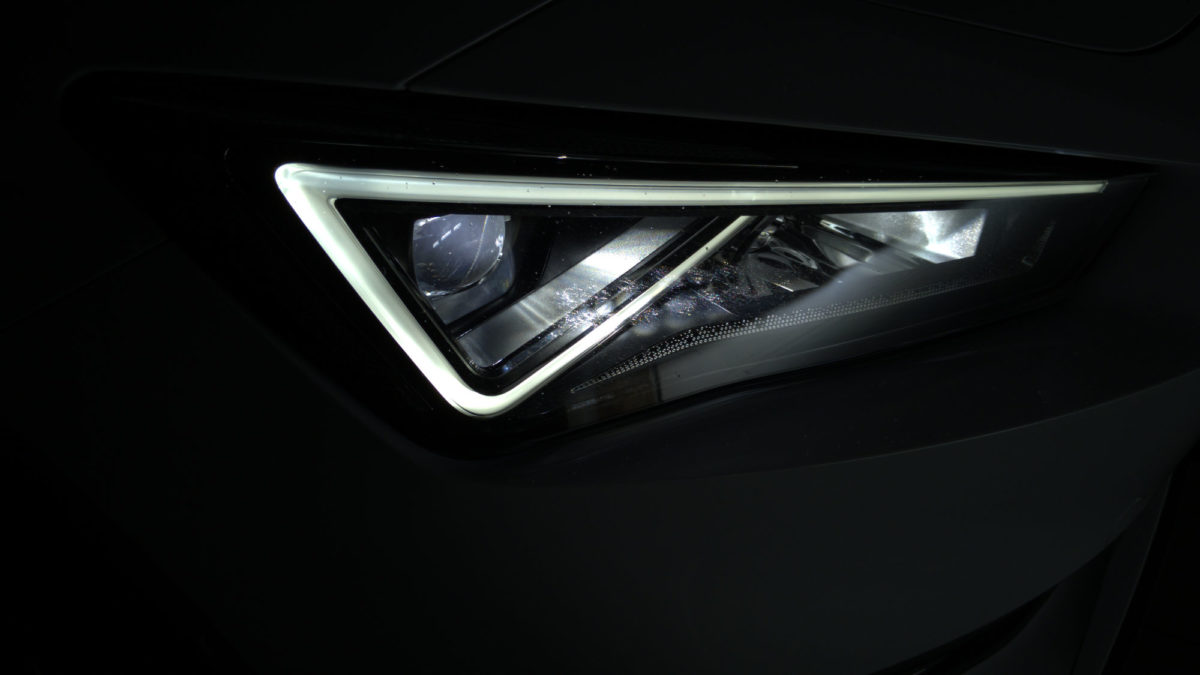
The lower half of the bumper is the thing that draws your eyes the most and has a lot more going on than the previous model. The straight lines have gone and there are some curved elements on the MK4’s bumper with fake intakes surrounded by what can best be described as fins.
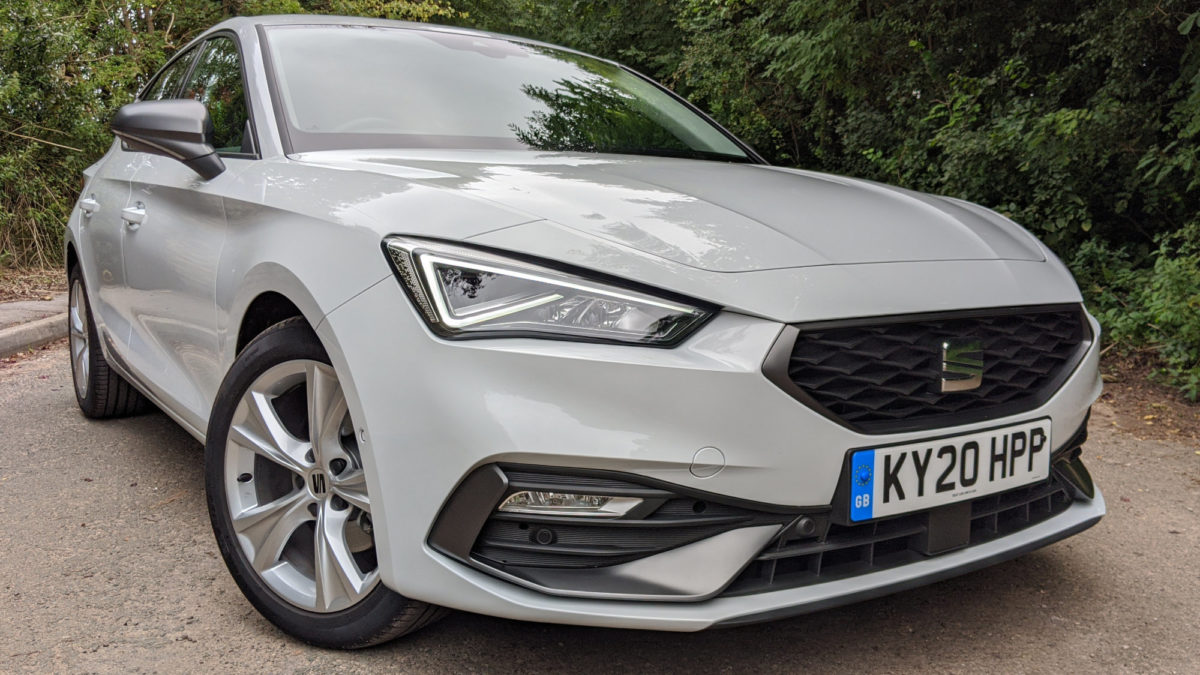
SEAT, as have other car manufacturers, have had recent restraints placed on them to improve pedestrian safety which is why modern cars are starting to look more similar at the front.
The side profile of the car is more familiar but in my view is a bit sleeker looking than the previous model from this angle.
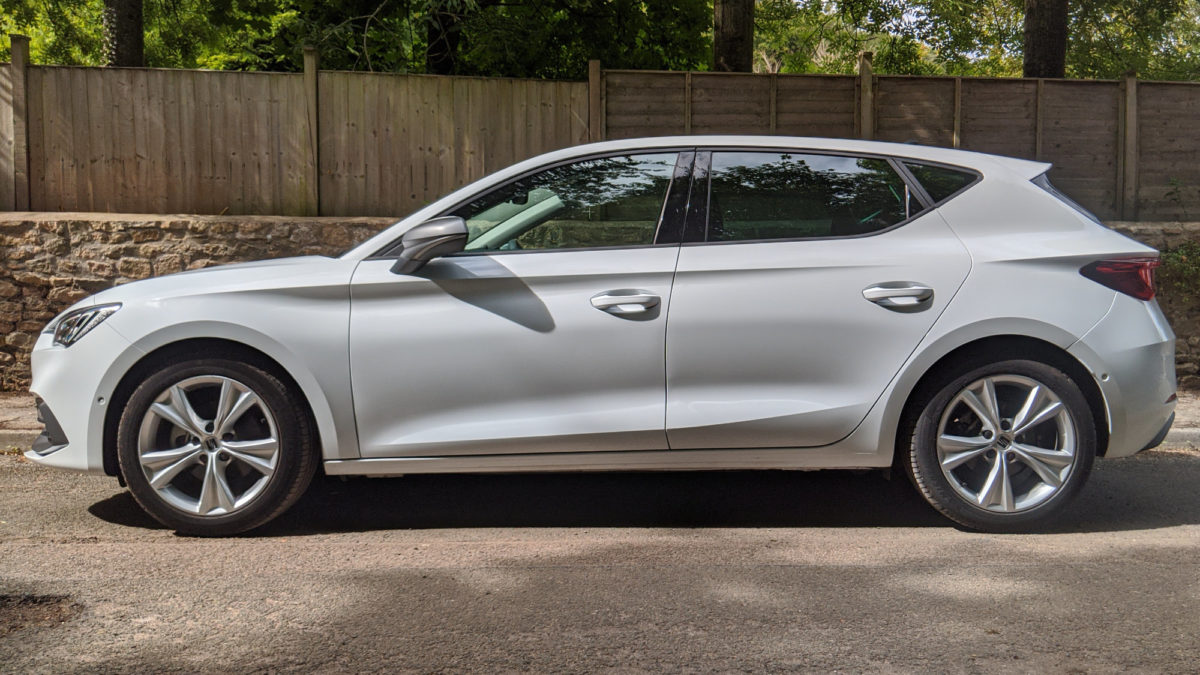
The 17″ wheels on this model are a bit plain looking, not really fitting for an FR trim, but as one of our members pointed out, they do look similar to those on some of the FR trims on the MK3.
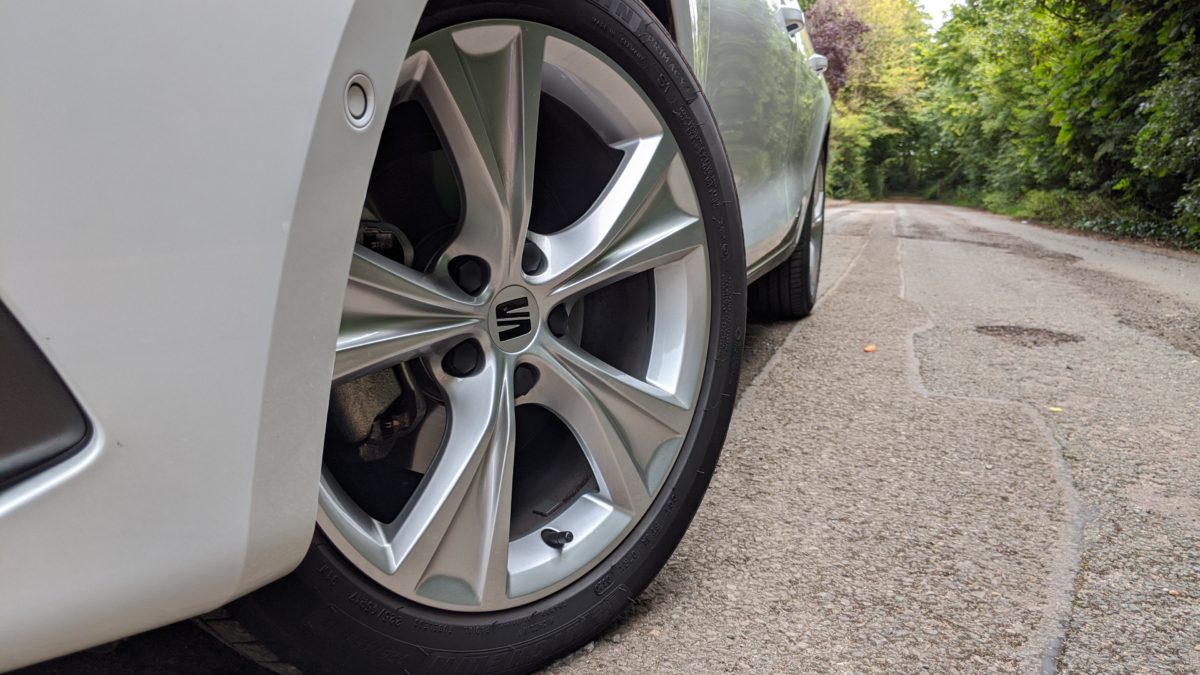
Many of you will remember that FR used to represent performance models a step down from the fire breathing CUPRA’s. Years ago, that was changed when FR became just a trim level.
On the MK4 Leon SEAT have taken this a step further by removing the FR badge from the front of the car as well as changing the design of the logo (still featured on the rear, steering wheel and kick plates) and removing the traditional red colour. I like the new FR badge design, but they should have left the red colour and kept the badge on the front in if you ask me. The badge removal just weakens the differentiation further.
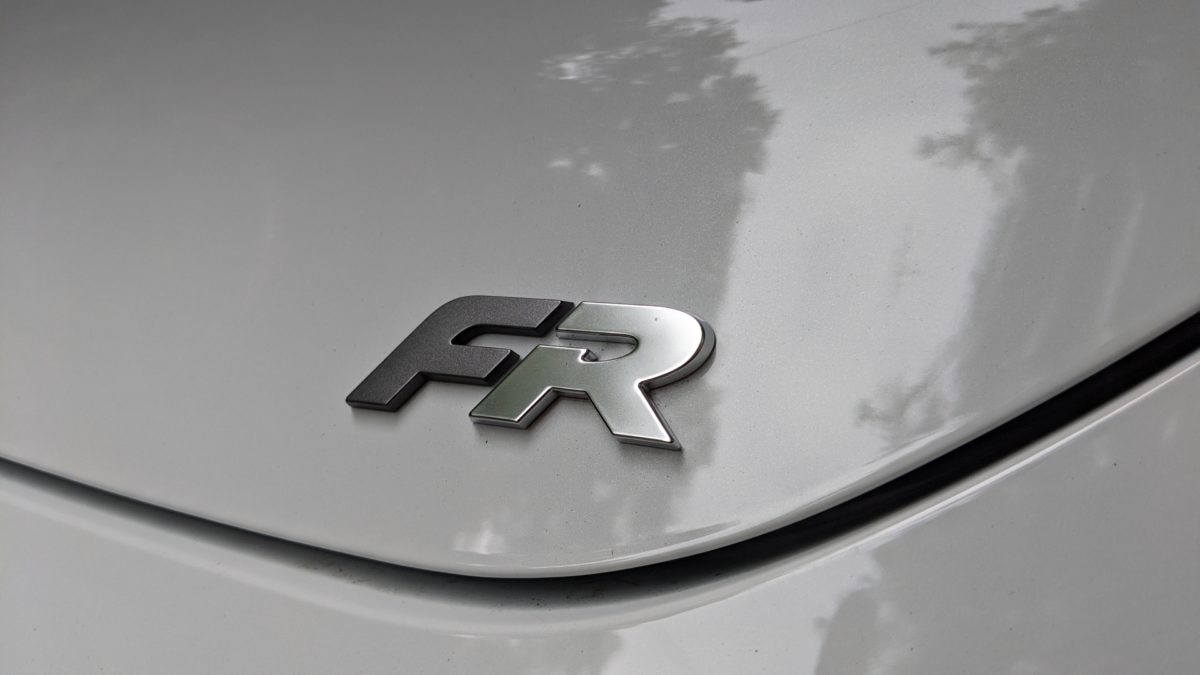
Moving to the rear of the car there has been a notable change as well. Starting at the top there is a decent size roof spoiler. The rear window feels more sloped (I don’t have a MK3 handy to compare), at the bottom it joins the boot lip which almost looks like a second spoiler.
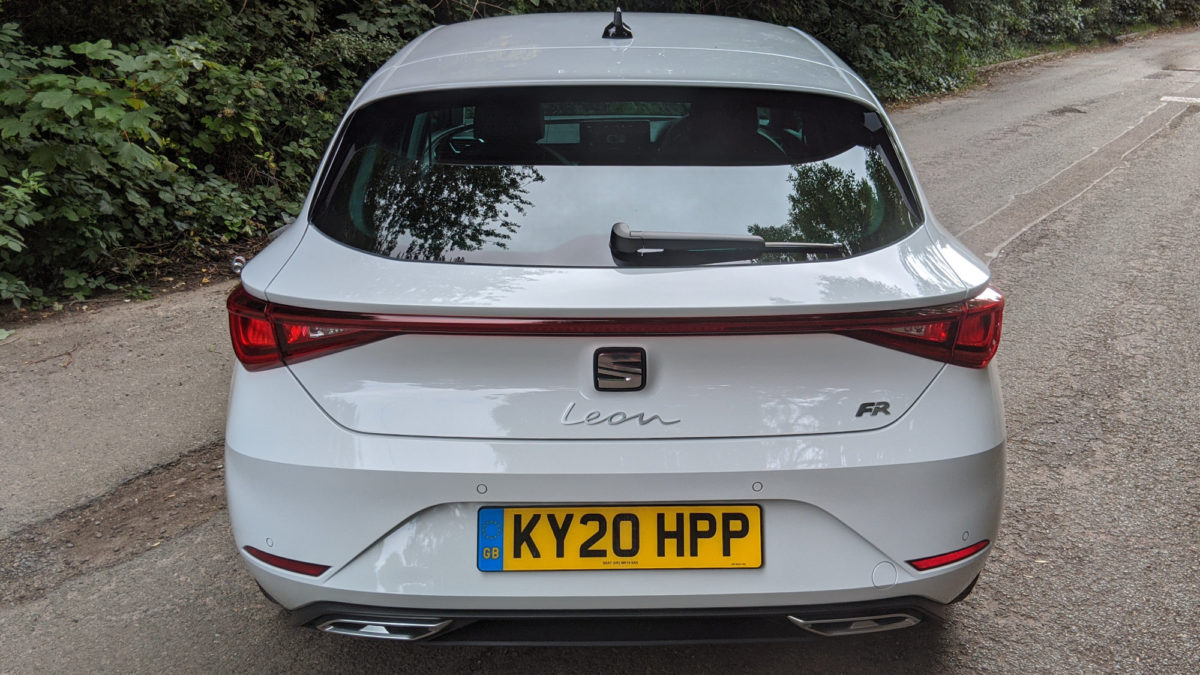
I like the design, but I noticed that water just sits in there when it rains between the window and the bodywork as it’s facing upwards there is no runoff apart from the sizes. You’re going to have to get the microfibre cloth jammed in in there to dry it out properly when you wash the car to avoid streaks when you drive off.
The rear lights SEAT call “Coast to Coast” run across the rear of the car and have a cool start-up and shutdown animation.
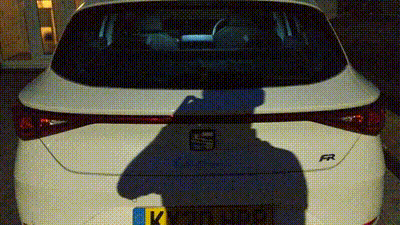
Below the lights the boot lid starts quite set back. The SEAT badge is still the boot latch (something sadly dropped on the Ateca), which is good to see retained on the MK4 Leon. However, it looks a bit odd as it has an almost embossed look sticking out of the inset metalwork.
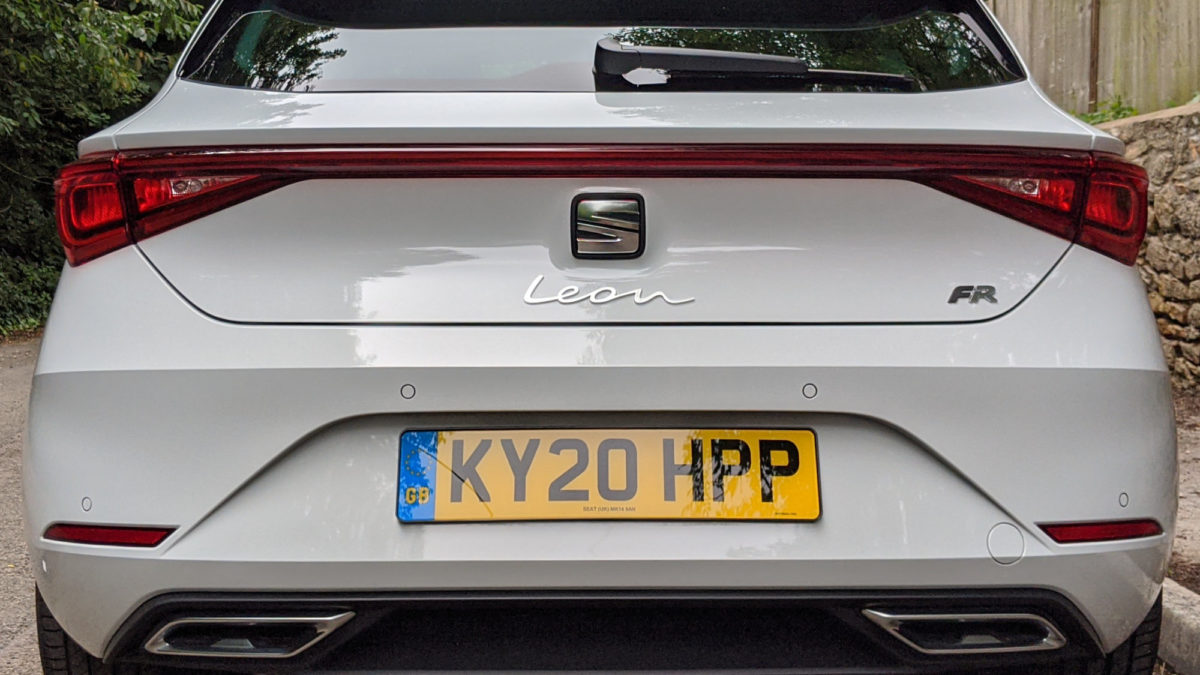
Below we see the new Leon logo in a handwriting style. Personally, not a fan and I can see some people will want to remove the lettering. However, we have seen this on the new SEAT Ateca so it’s something SEAT plan to use on models going forward. I am presuming, it’s supposed to indicate “Spanish flair” or something. Thankfully, they have stuck with the familiar CUPRA font for the new CUPRA models.
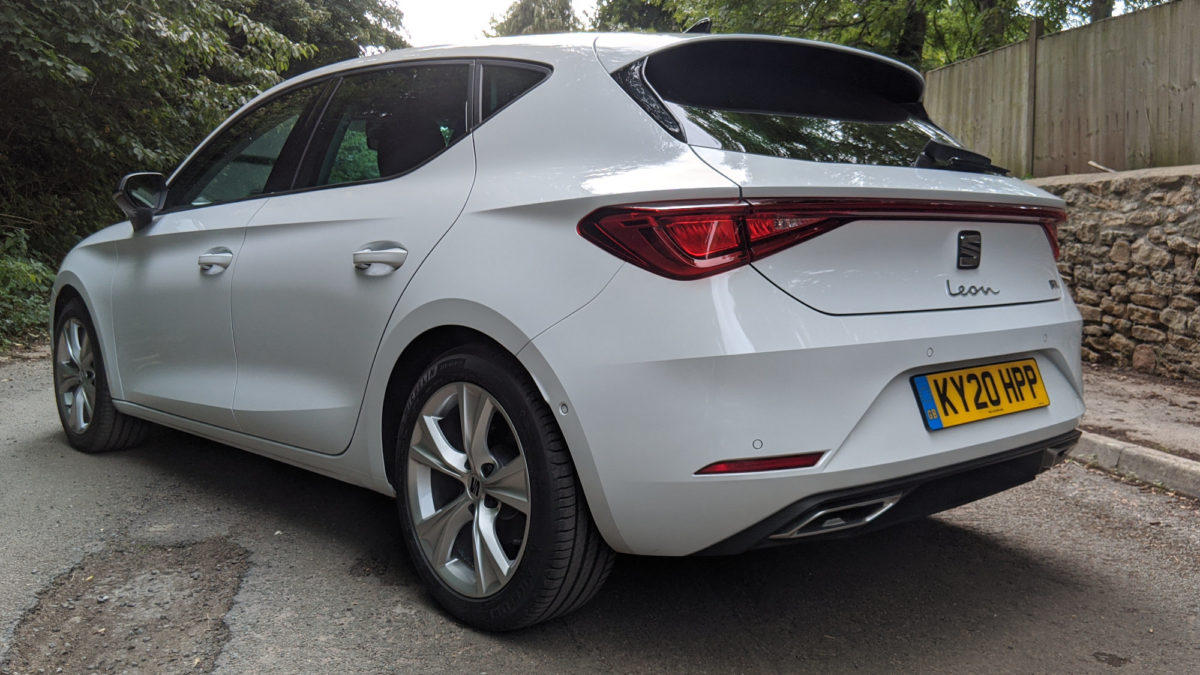
I miss the contrast of the black plastic insert on the lower bumper from the MK3 and MK2, instead it is body coloured apart from the small strip at the bottom for the fake exhaust pipes.
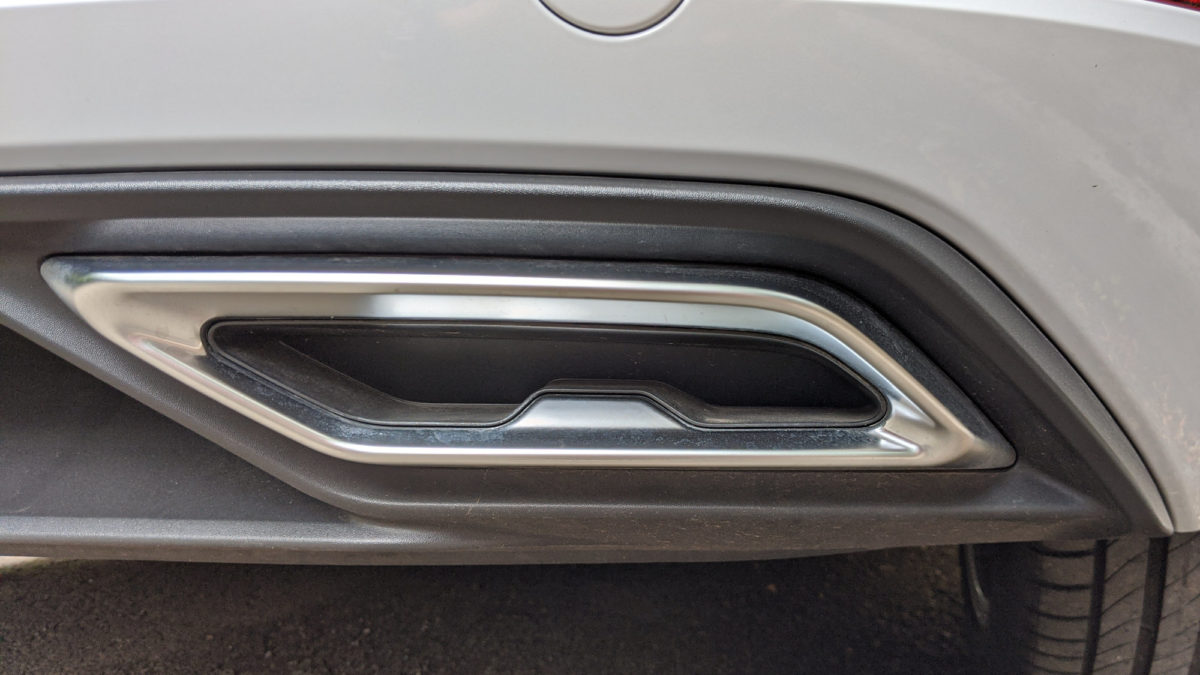
The rear is certainly modern looking but has lost some of the aggression from the MK3.
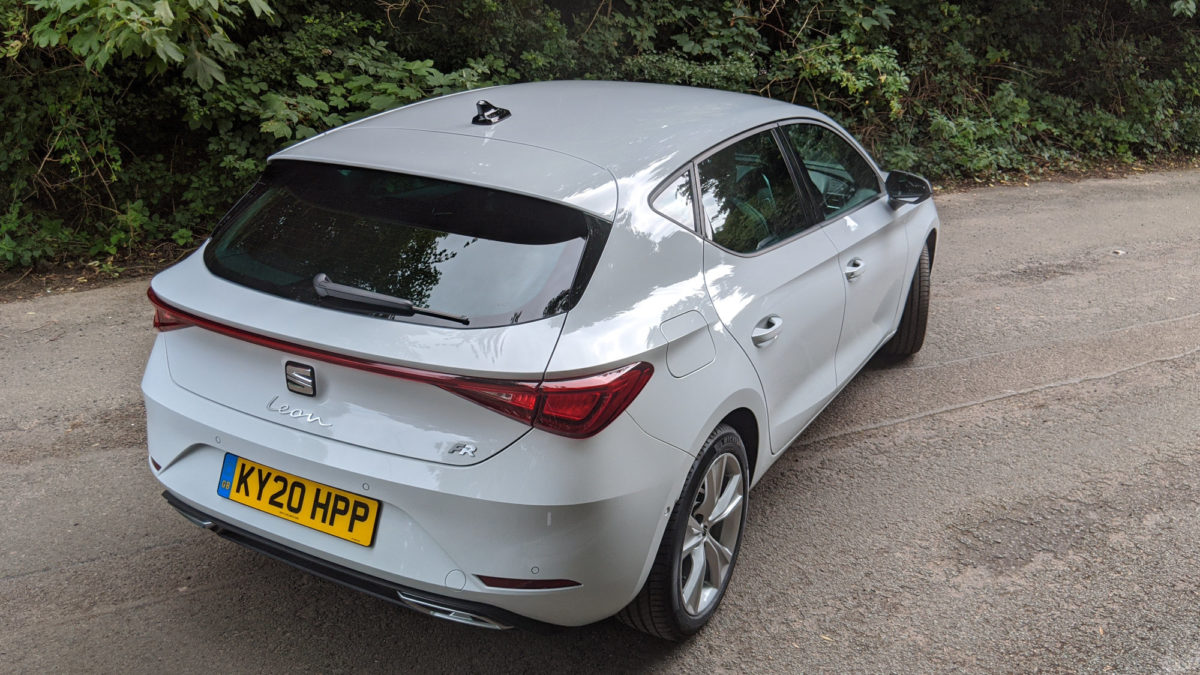
Interior
First impressions of the interior are good. It is comfortable, and SEAT have retained a nice simple ergonomic layout they are known for from their cars. I find other car interiors (outside the VW group) to be cluttered in comparison with SEAT’s offerings.
When you open the door you are greeted by illuminated door sills with the FR Logo. At night you can also see the downlight from the door mirrors on each side.
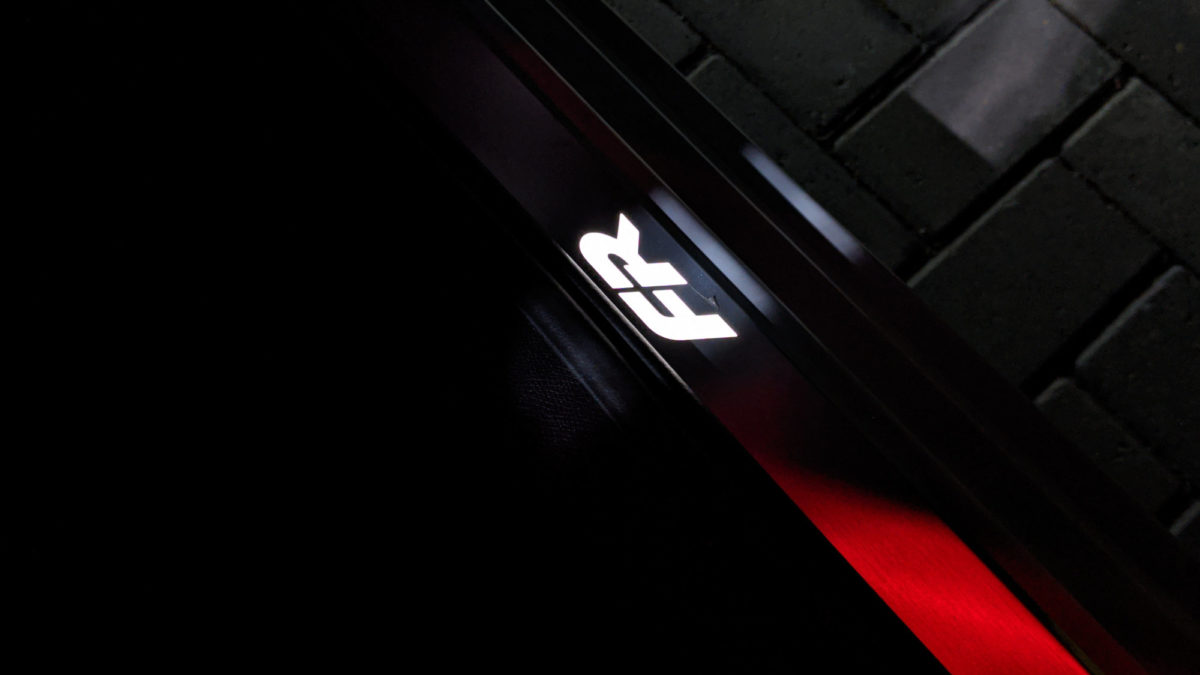
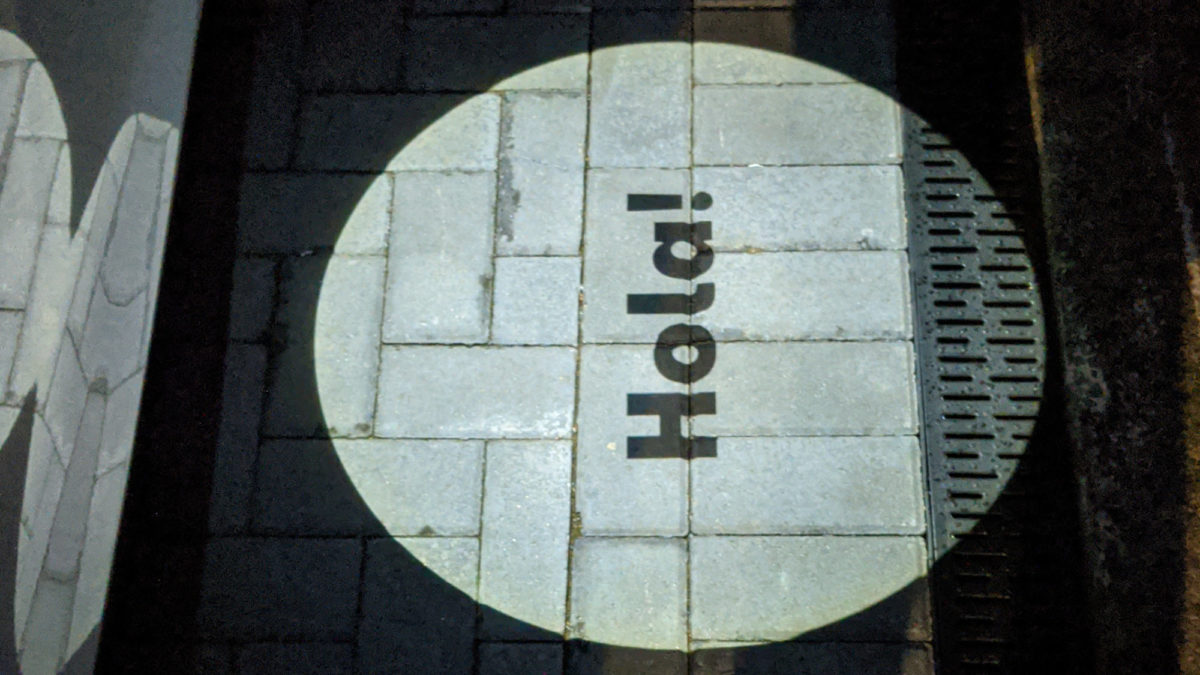
One of the biggest talking points on the forums is the infotainment screen. We’ve done a video to explain what it is like much better than could be explained in writing.
In summary for the screen: the interface is good and clear, and you can control everything from it, however the touch buttons for the climate and volume should be physical buttons or dials. SEAT need to rethink this decision, it’s driver hostile. Oh, and don’t get us started on the voice controls!
It is now a glossy screen unlike the previous generation which means fingerprint marks appear immediately and if you have OCD will annoy so keep a cloth in the glove box! They aren’t very noticeable in operation but in sunlight could still be seen when the screen is on.
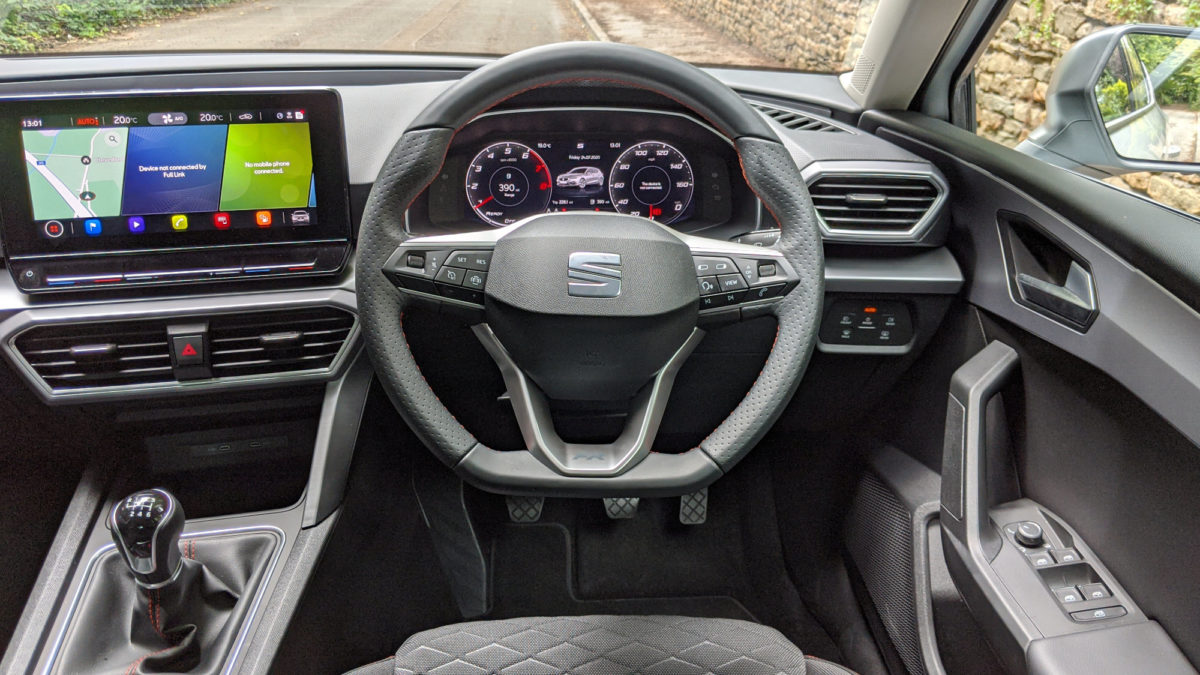
The digital dash is nice and clear and gives you several options to configure it how you like it with quite granular control. I like how it shows the album art from music playing through Android Auto (and I’m assuming through Apple CarPlay) as well as the photograph of your contact if you are on a phone call.
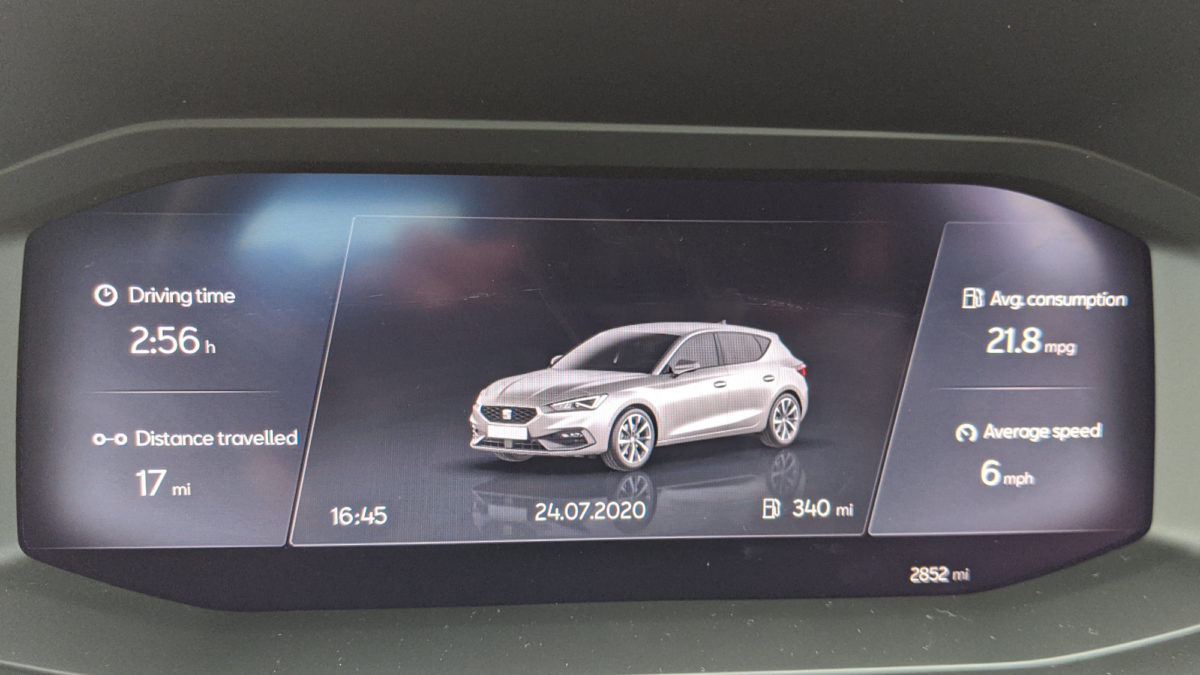
The red stitched steering wheel is nice and comfortable to use, featuring sporty grips at the top, it doesn’t get in the way of visibility of the dash and has a flat bottom featuring the FR logo. There are lots of controls on the wheel too for controlling the screens, music, phone, and cruise control.
The centre panel has a plastic brushed aluminium strip running across which looks nice. The main dashboard area has the familiar soft touch rubber.
The trim feels on par with the last Leon, not much of a change in quality for better or for worse. I did notice a few minor creaks on bumpy roads.
The air vents, now lower down in the centre due to the screen as well as the side vents have a Lambo look about them.
On the subject of air vents, the air conditioning was quick and powerful compared to the Ibiza I had been driving which took a good few minutes to get going and cool the car down.
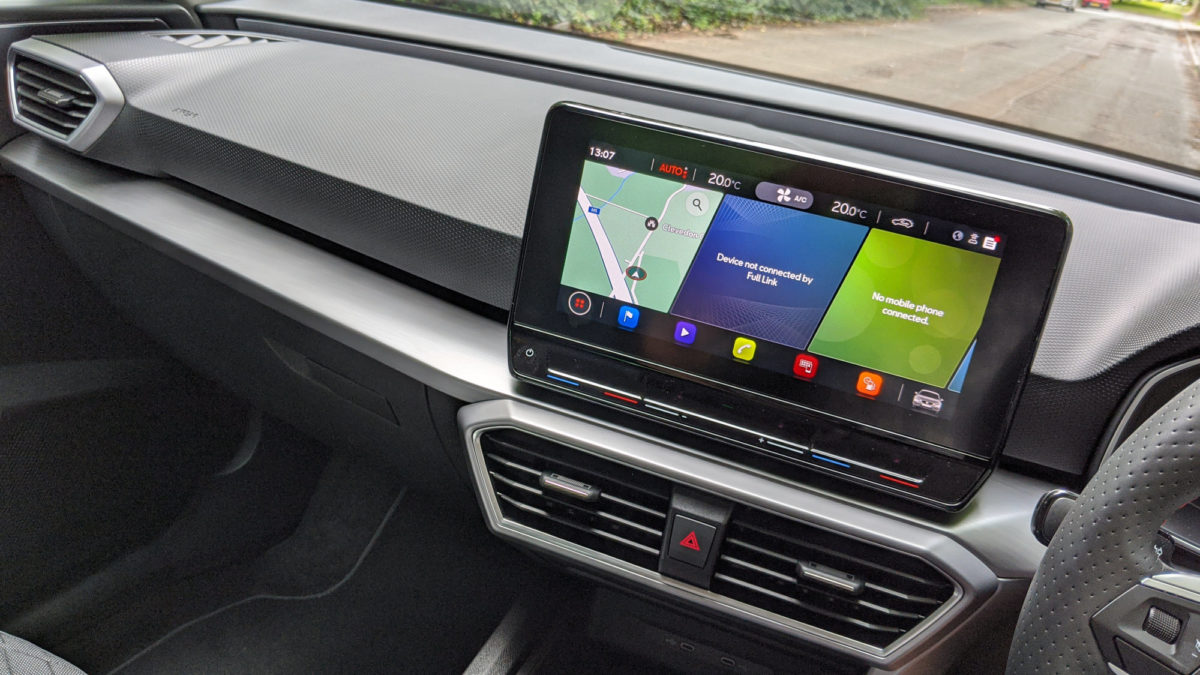
Moving on to the rest of the interior, there are signs of unnecessary cost cutting including the slightly flimsy feeling touch controls for the lights when a traditional dial would have been easier to use.
Storage space inside the cabin is ok however the removal of some of the storage areas from the previous generation is again is another cost cutting step.
- Glove box is a bit bigger
- Front tray is deeper to hold your phone, wallet, purse etc
- Drinks holders are a decent size although are compromised by the sliding arm rest
- Arm rest has storage which is a reasonable size
- Side door panel storage is bigger and can now support water bottles in an upright angled position
- The DSG version (not this one) has a couple of small extra trays for things like the car key
- The under-seat compartments from driver and passenger seats have gone which were handy on the MK3
- The small cubby compartment from the MK3 below the light switches has also gone
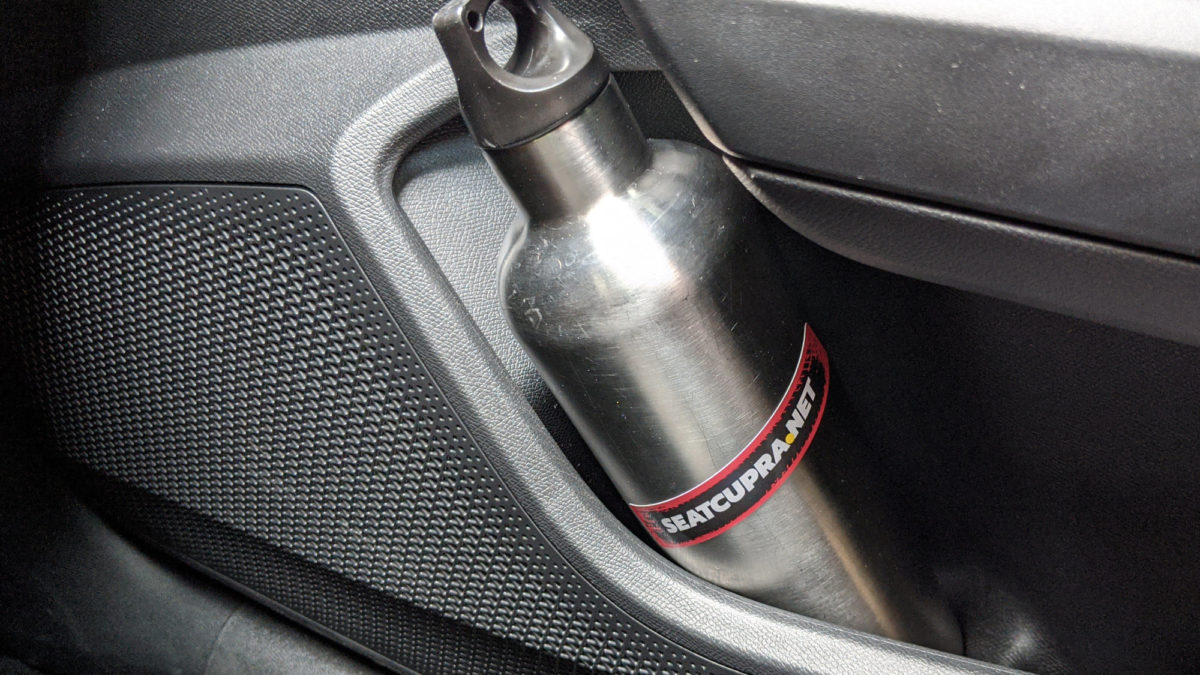
There are four powered USB C ports, showing SEAT are keeping up with the times, two in the front tray and two for the rear passengers.
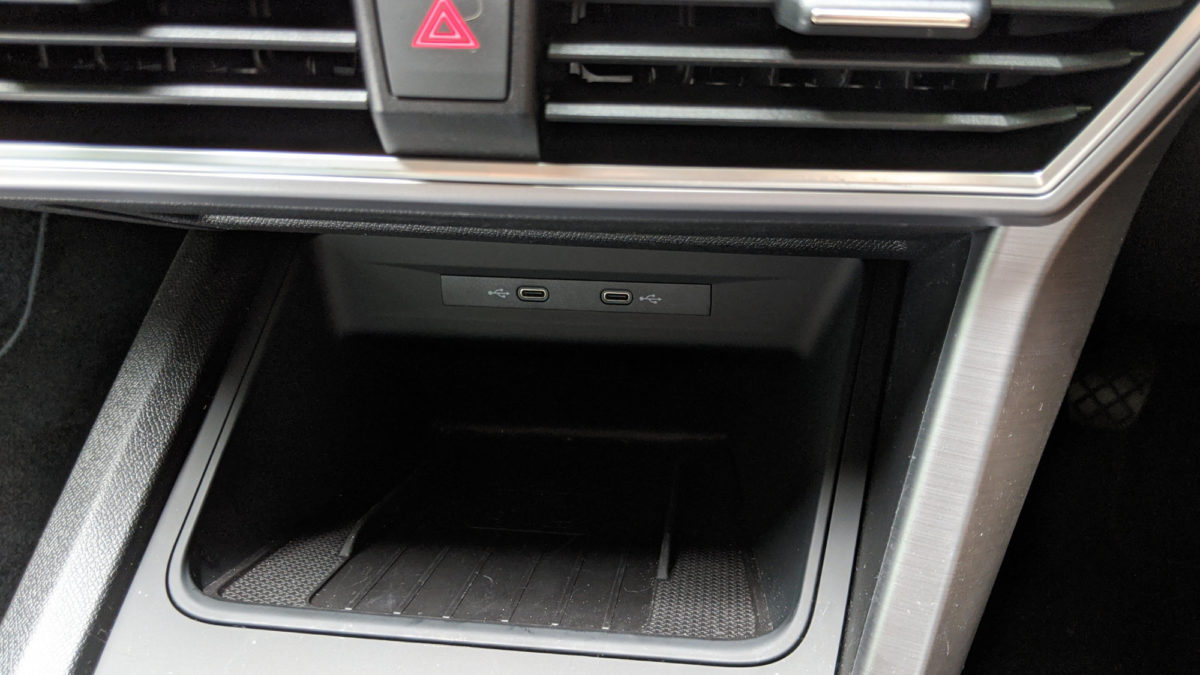
The seats are extremely comfortable and supportive with good bolsters and are well-padded but not too soft. I could easily sit on a long drive in them with no complaints. The seating position has plenty of flexibility for your taste and has a lumbar support lever.
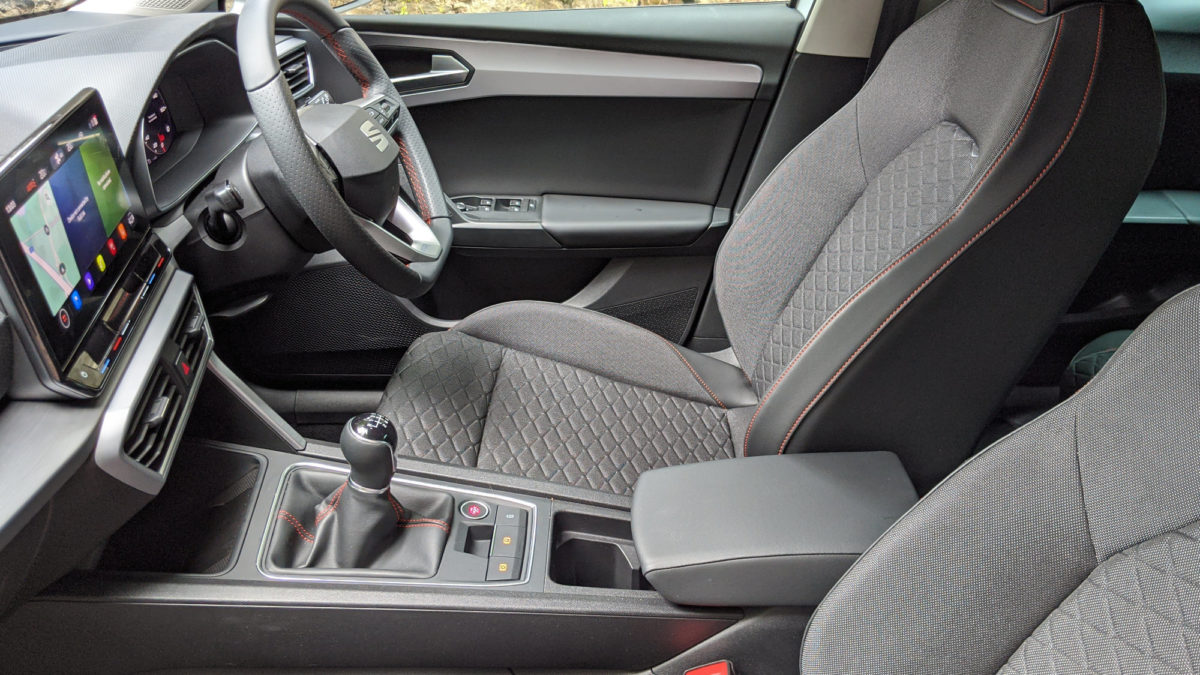
Moving to the rear the seats which are again comfortable, and the rear legroom has noticeably improved from the previous generation, which wasn’t bad, but you can certainly see the difference on this generation.
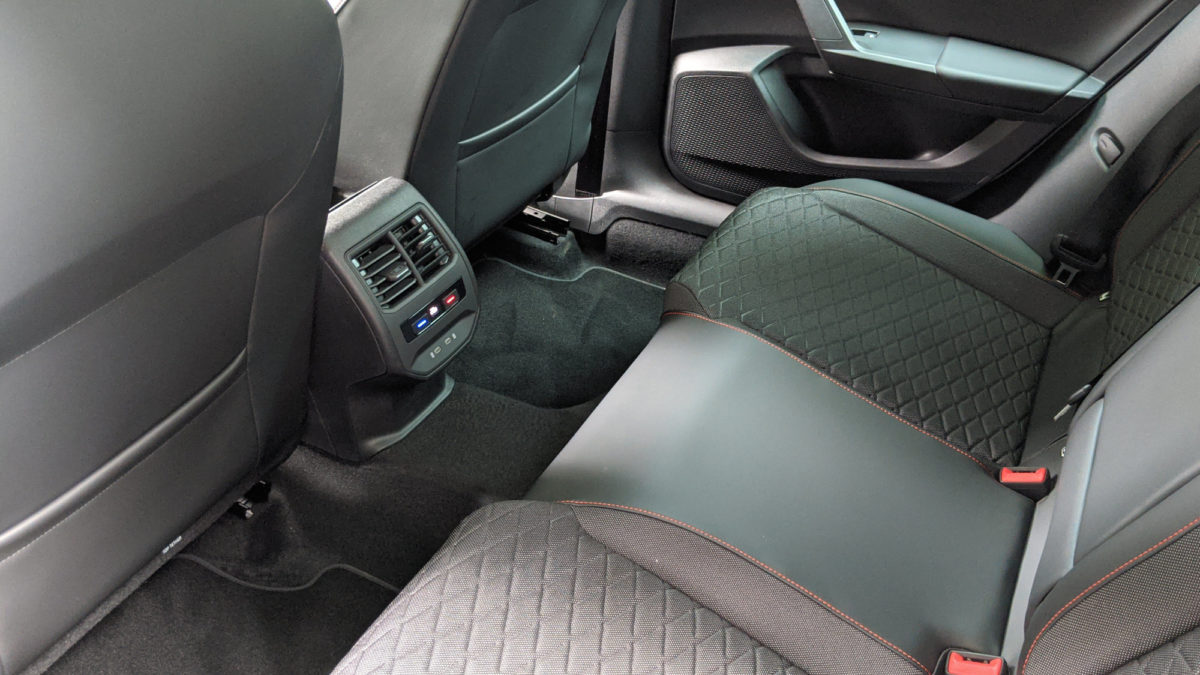
The rear passengers have their own climate control settings on this model, which as shown in the video can be locked from the infotainment screen if required.
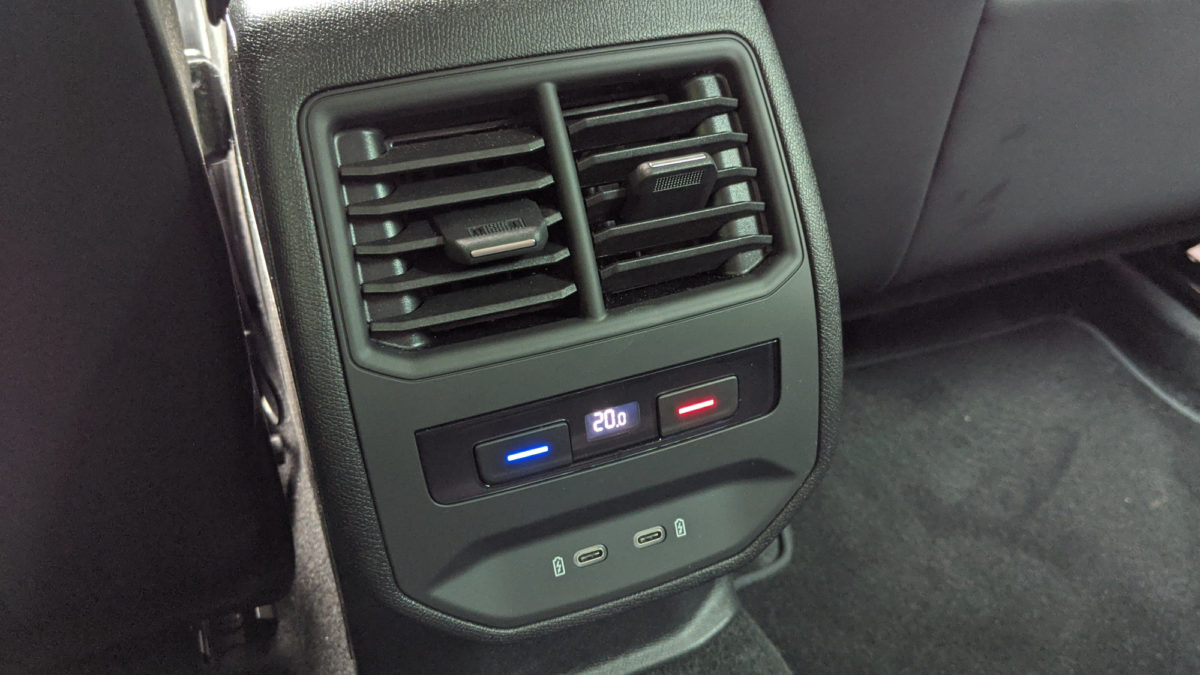
The rear bench has a pull-down centre armrest as per the last generation and looks the same from what I remember. It also provides access through to the boot if required as before.
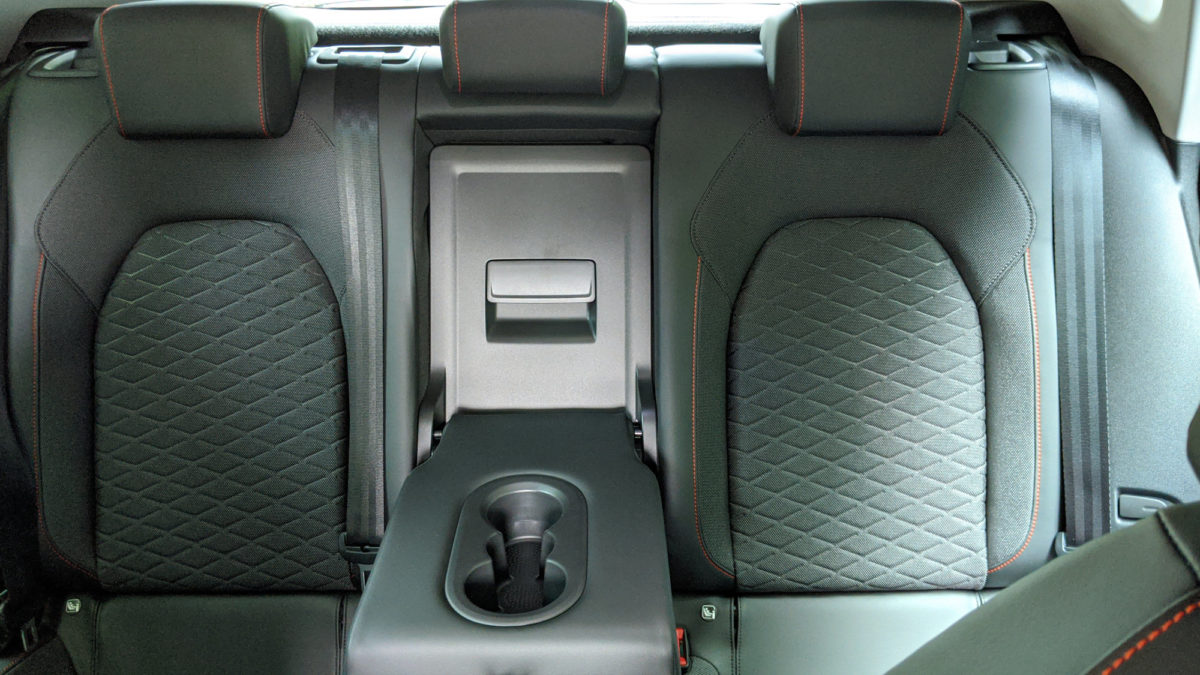
As you’ll see from the dimensions at the top of the review, boot space is the same as the previous generation. You also weren’t expecting a spare wheel, were you?
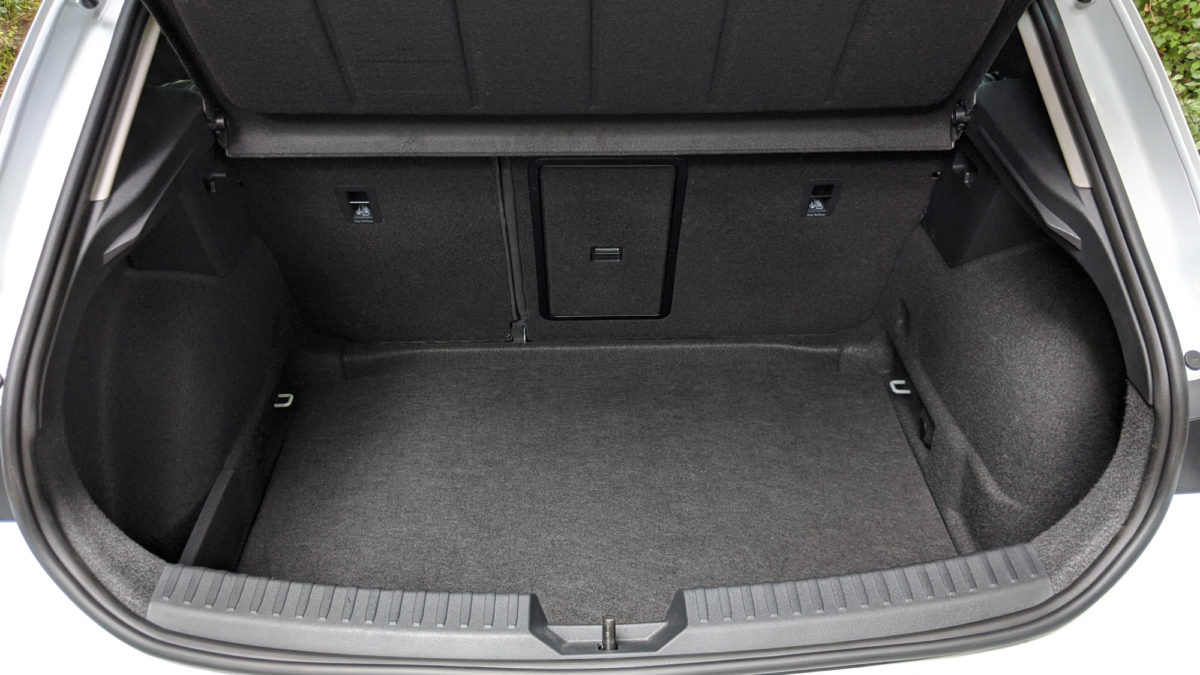
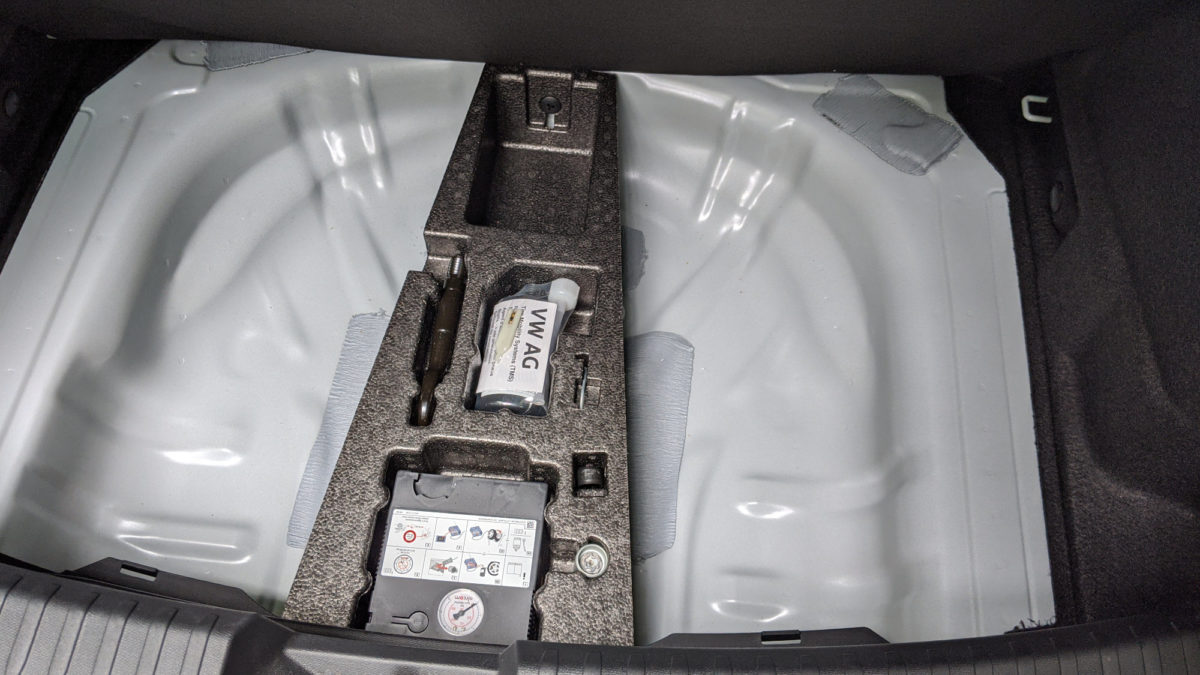
The interior lighting on the car is worth mentioning. At night, the LED lighting in the cabin when you are getting in our out, is super bright, like daylight bright.
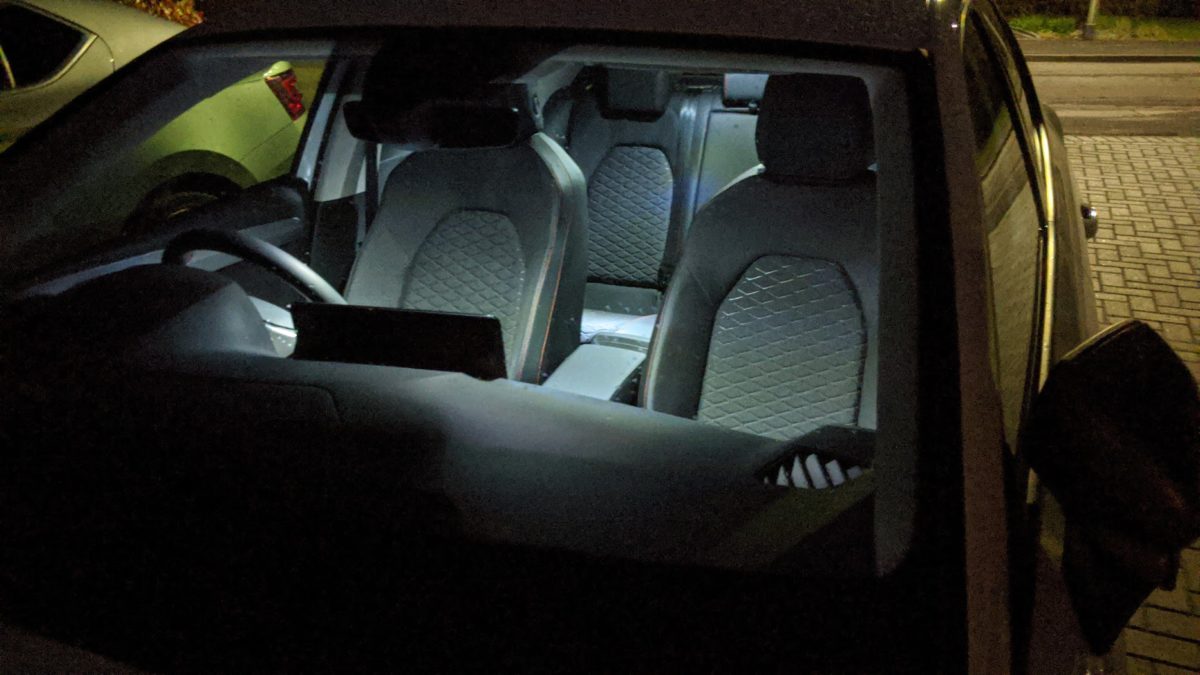
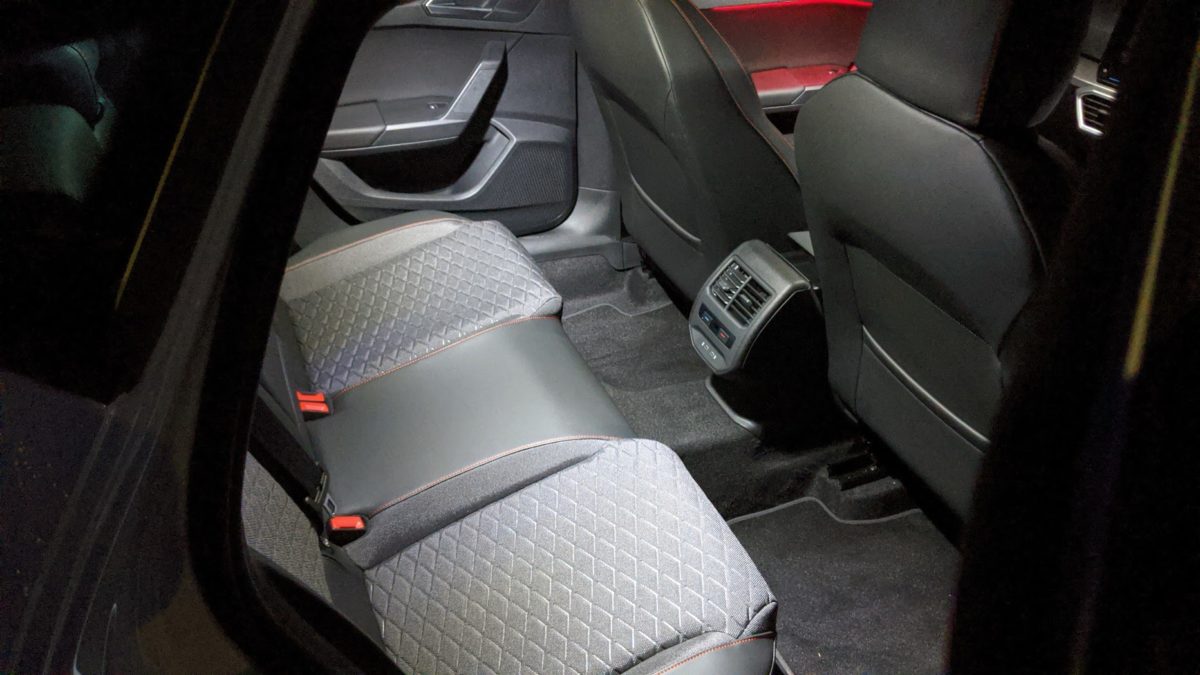
You also get ambient red lighting in the car (this colour is not changeable that I could see).
Driving and performance
The 1.5 engine had plenty of oomph to it and I don’t find it lacking. There are issues with this engine within the VW group and VW claim that software updates have fixed them.
I can’t say I came across any hesitation or anything that didn’t feel right to me. I spent a total of 5-6 hours driving the car during the time it was with me for this review.
Motorway cruising is fine as is overtaking capability.
The gear changes feel good with a nice clean mechanism to the gear box. I’m now a DSG convert personally, but enjoyed the manual drive, nevertheless.
Handling feels sharp enough for most drivers, this isn’t a CUPRA after all. It certainly is fun, fast enough and handled well enough for I’d suggest 95% of drivers.
The brakes are nice and responsive, the steering holds no surprises, and the suspension strikes a good balance between comfort and engagement with the road.
It all feels very-familiar, very much like the Leon before it. I can’t say I noticed much in the way of a difference in agility or handling due to the slightly longer wheelbase.
Driver aids
The car has several driving aids included, such as lane assist and parking assistance. These work as expected so I won’t go into detail about them here.
You can find out more about all the available driving aids on the new Leon on our YouTube Channel,
New key
SEAT have launched a new key design with the new Leon.
I have mixed feelings about it. It looks nice, but form has taken priority over function and the buttons are moulded into the plastic and only have a slight indentation. This means it’s hard to lock and unlock the car without looking at the key. Something I did without looking on the previous model as you could easily find the buttons.
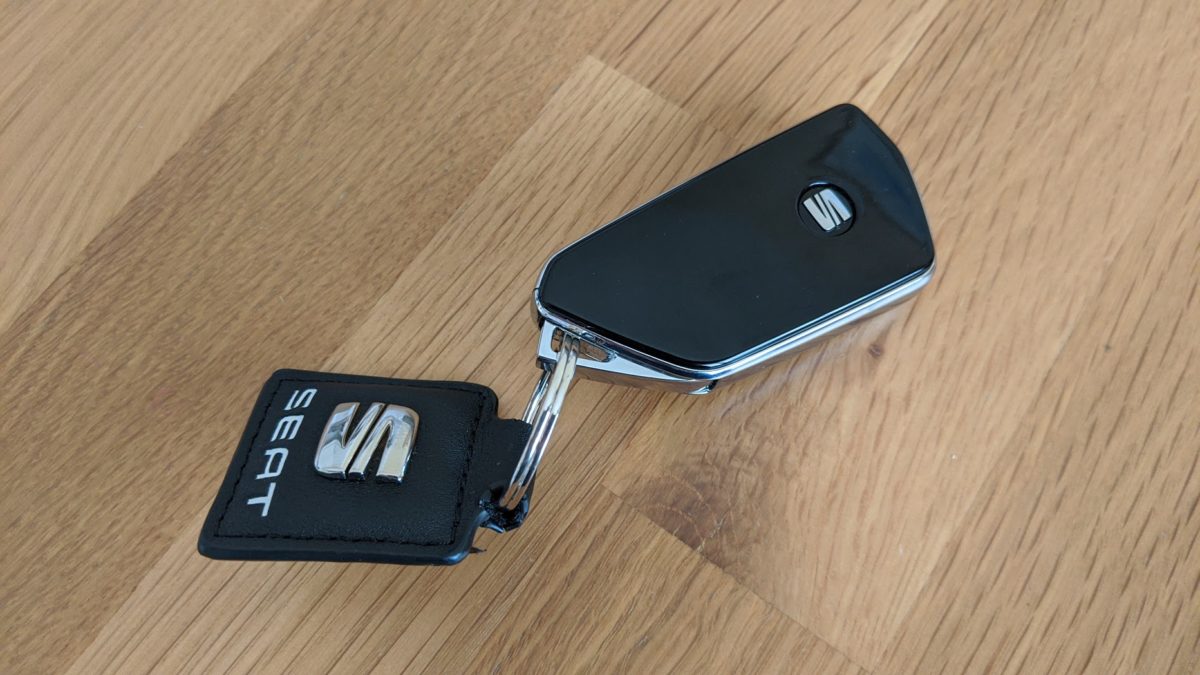
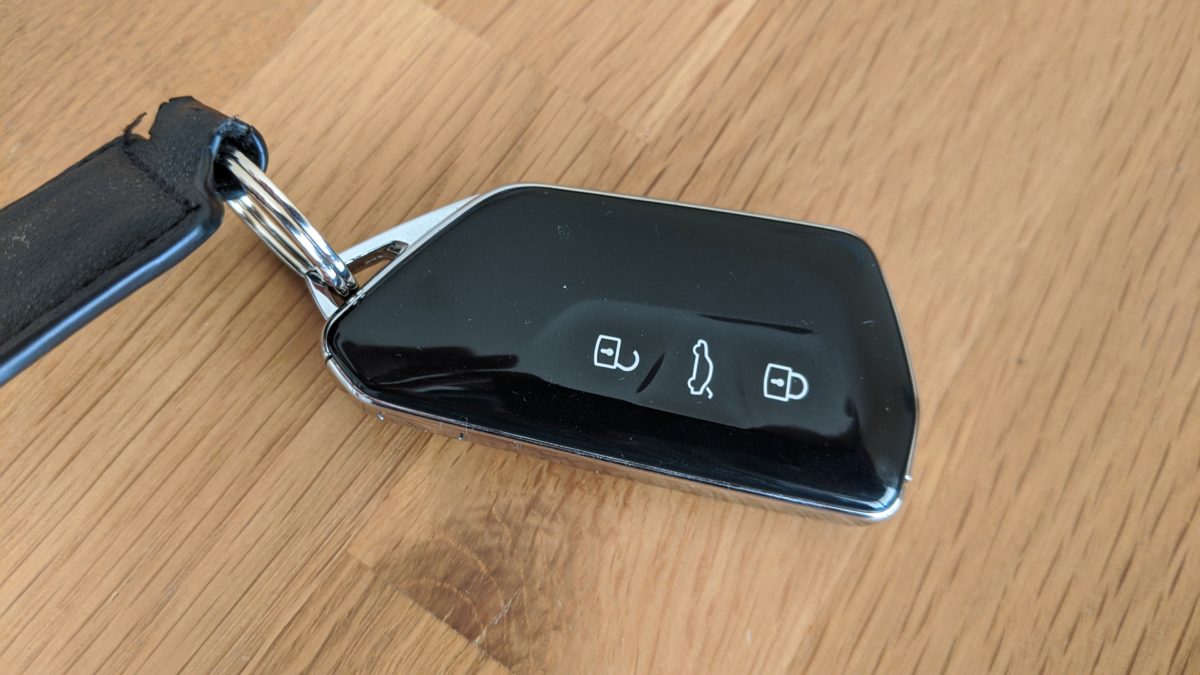
However, the key is certainly different and quite stylish. Glossy black though so likely to scratch.
Last thoughts
With the Leon being SEAT’s biggest selling model, having overtaken the Ibiza with the last generation, SEAT can’t afford to get this car wrong.
In my view, the new SEAT Leon doesn’t take a huge step forward for SEAT, instead they have iterated on an already successful formula. They have played it safe.
The fact the car is running on the same – albeit tweaked chassis goes a long way to making the car feel the same to drive, and that’s not a bad thing by any means.
Looks wise you’ll need to make your own mind up. It certainly needs to be seen in the flesh before making judgement I’d suggest. With a better set of wheels I think the car would be quite a looker, one that blends in with more cars on the road than ever before, yes, but the SEAT and CUPRA fans will take notice I’m sure.
There has been a bit of cost cutting on storage removal, but SEAT have to save some things to market as enhancements for the mid-life face-lift!
What do you think? let us know in the comments below or feel free to ask any questions you might have about the car.
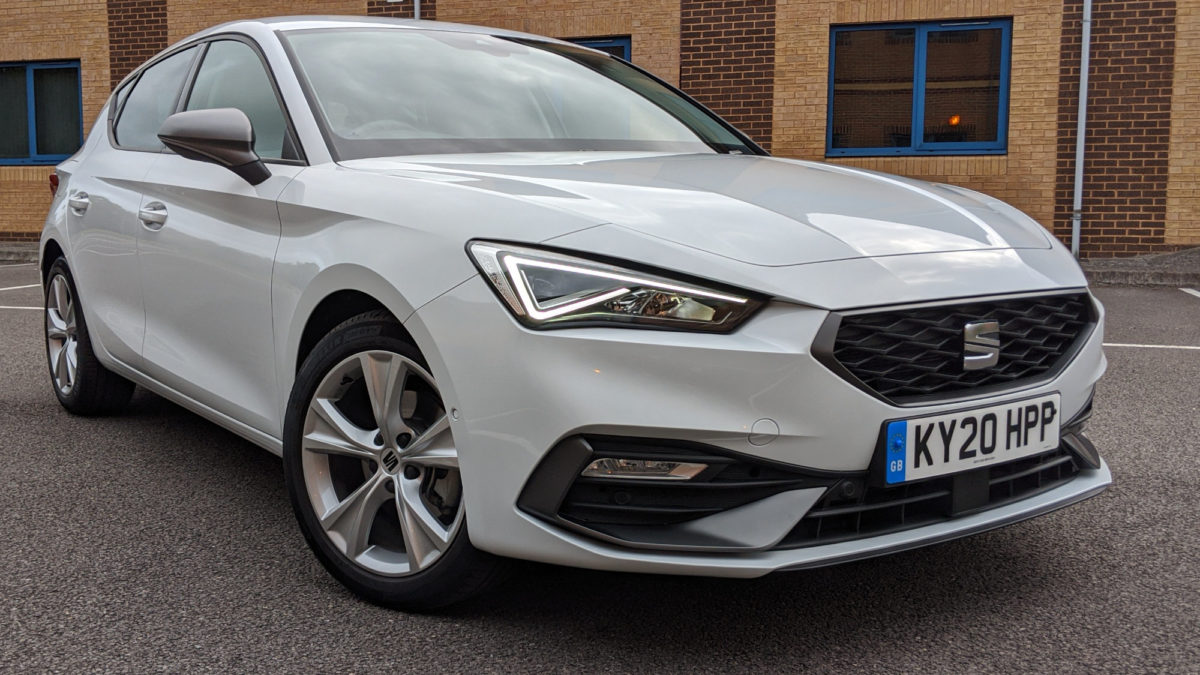
Specifications of the model in this review
| Engine | 1.5-litre TSI |
| Transmission | 6-speed manual |
| Power (BHP) | 150 |
| Torque (Nm/lb ft) | 250 / 1500 |
| Fuel economy (mpg) WLTP | 44.8 – 48.7 |
| CO2 (WLTP) | 132 |
| 0-62 mph | 8.4 |
| Top speed | 134 |
| Price (as of 1st June 2020) | £24,535 |
| Insurance group | 22E |
Standard Equipment fitted: FR
- 17″ Dynamic bi-spoke alloy wheels with 225/45 R17 91W tyres
- Electrically adjusted and heated door mirrors with fold function
- LED Headlights with dynamic indicators and high beam assist
- Rain sensing wipers
- Daytime running light with automatic headlight control and Coming Home feature
- Wireless phone charger
- Auto-dimming rear view mirror
- Front centre armrest
- Front seats manual lumbar adjustment
- Rear seats armrest
- Leather flat bottomed, perforated steering (with red stitching and FR logo) and leather gearstick (gearshift paddles replace leather gearstick on DSGs)
- Illuminated front door sill
- Three zone climate control
- SEAT drive profile selection
- Sports suspension


